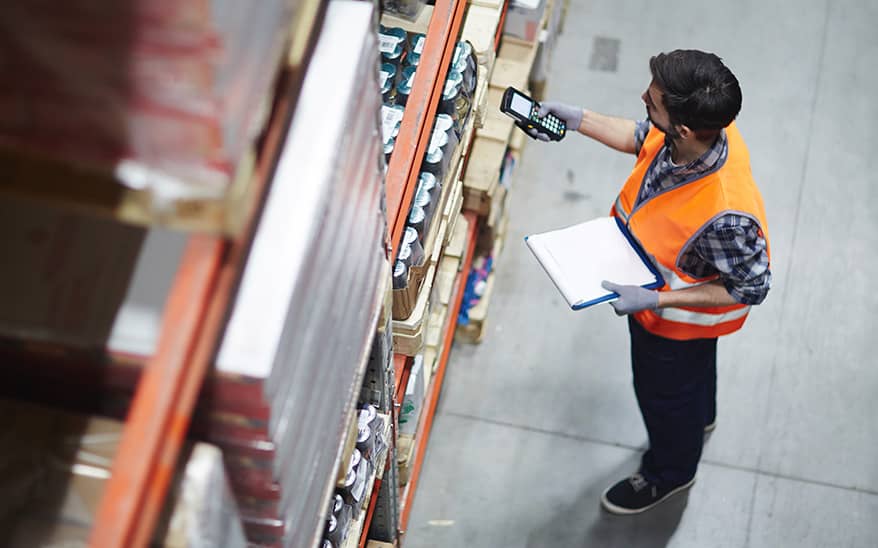Addressing Wastage And Distribution Challenges Key To More Equitable Post-pandemic Pharmaceutical Industry
- 8 September 2021
- By Manhattan Staff

When functioning properly, globalised supply chains broaden access to critical medicines for billions of individuals all over the world. Yet any number of events, from macro events like the recent COVID-19 pandemic or the 2010 volcanic eruption in Iceland, through to more simple patient misunderstandings can lead to expensive and often unnecessary wastage.
The pharmaceutical industry has a complex global supply chain. One that requires regulatory scrutiny, a raft of compliance checks as well as the challenges associated with transporting products that are often both temperature and humidity sensitive. But as we emerge from the pandemic, there is also a growing awareness of the need for better distribution of vital medications, both within individual countries and across the world.
[Spokesperson, TITLE,] Manhattan Associates, explains how end-to-end supply chain visibility, not least reverse logistics, can help pharmaceutical companies to better manage both prescription and over-the-counter products to reduce wastage and support global strategies for more equitable distribution.
Recognition and Responsibility
Drug wastage has been a concern for health services and pharmaceutical providers for many years. Wasted and unused medicine is estimated to cost the NHS in the UK £300 million every year – but the problem extends far beyond patient behaviour. In a market where ensuring vital products are always available at the point of demand, pharma supply chain parameters, in tandem with national government demands for ‘safety stock’ to safeguard the population, have led to over-supply and products remaining unused after expiry date.
In a post pandemic world, pharmaceutical companies need to address the supply chain issues that have been highlighted by global disruption over the past year and a half; issues that have encouraged countries and consumers to over-order and stockpile in a bid to avoid out of stock issues that can devastate patient lives.
Companies, however, are also recognising a growing corporate responsibility and expectation for wider and fairer distribution of essential drugs. If this is to be achieved, existing supply chain processes must be more efficient: by eliminating the waste that is endemic within consumer-driven societies, it will be possible to free up the quantities of medication required in developing nations and meet the World Health Organisation’s (WHO) calls for greater health equity.
Data Driven Control
Digitisation is transforming the way pharmaceutical companies can control the end-to-end supply chain and data capture is fundamental to that process. From the EU Falsified Medicines Directive demanding every product has a GS1 data matrix code, to the introduction of Crypto Codes in Russia, companies must capture deep information for each product.
In tandem with the rapid adoption of the Internet of Things (IoT), cloud-based data capture/storage, and the use of advanced analytics (including AI), data can provide organisations with advanced end-to-end visibility across their supply chains, and the ability to make rapid changes at the point of need.
With real-time access to information that includes production and expiry date, as well as storage requirements, inventory management can be more intelligent, especially when combined with up-to-date performance data from third party logistics (3PL) partners.
Any supply chain glitch – from warehouse delays to traffic jams – can be managed in real-time. Companies can reallocate products between nodes – including distribution centres, warehouses, even within pharmacies – on demand, using real-time stock visibility to manage the process meet demand deadlines. Stock can be reallocated using expiry dates to ensure products with a short lifespan have the best chance to arrive at and be used by the end customer.
The entire process is dynamic, intelligent and designed to maximise availability without requiring expensive and possibly unnecessary safety stock.
End-to-End Visibility is the key
With this ability to track products throughout the entire supply chain, pharmaceutical companies can make two vital changes: first, automation – from robotics to AI – becomes far more powerful, with real-time information about product and component supply driving continuous and seamless production and distribution change to optimise processes. Secondly, it also empowers individuals to take immediate decisions. Something that will always be important when considering the customer/patient.
Furthermore, one of the biggest challenges for pharma has been the lack of insight into the behaviour of the end customer. Patient prescription information is not available for privacy reasons, making it hard to forecast demand; something that often leads to overstocking. However, the growth of population health data in tandem with powerful data analysis tools is allowing organisations to gain far more insight, more quickly, into changes in patient demands.
This population health data will also feed into national strategies for so called ‘safety’ stock of vital medication – such as vaccines – and help countries to minimise overstocking that can lead to waste.
Understanding the supply chain at a more granular level and identifying whether problems are temporary or likely to have a long term impact will allow more accurate allocation of medication throughout the distribution network and allow wealthy nations to meet their goals of redeploying surplus to less economically developed areas of the globe.
Extending Control to Reverse Logistics
Managing unwanted products back through the supply chain is a challenge for organisations in every industry. Within pharma, however, where product storage and regulatory compliance issues have to be tracked and managed, it has often seemed impossible. Yet the combination of IoT and superfast networks is beginning to introduce new opportunities to pharmaceutical companies because products can be traced all the way through to the end patient and back again.
For example, in addition to the use of IoT controlled refrigeration units improving product storage and management within pharmacies, trials are currently underway using IoT enabled boxes to continuously monitor the temperature at which certain drugs are stored by patients. Should the product not be required by that individual, this storage information, in combination with other factors such as expiration dates, could help to repatriate expensive items into the supply chain for reallocation.
Real-time supply chain management remains a huge challenge for pharmaceutical companies. Yet with the increased speed and lower costs associated with digital innovation today, developments such as the use of smart labels are making it affordable to track even more products, and advanced analytics overlaid with AI are enabling organisations to gain new insights into trends in patient behaviour.
With these new innovations the industry has a chance to further extend visibility right through to the patient and back again, in the process, opening up new opportunities to improve performance, reduce waste and meet the domestic and global goals for the safer and more democratic distribution of key drugs.




